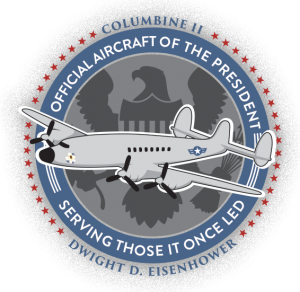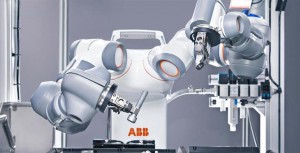Mischief Lurks Amidst the Data
Posted on March 25, 2015
Filed Under Business, Technology | Leave a Comment

Wow, the sheer scale and density of information on the Internet, not to mention corporate computer networks apart from the web, is becoming mind-boggling, and a growing opportunity for cyber mischief, intentional or by happenstance. Technical writers need to pay heed to what’s going on around them in this regard.
Mark Schaefer in his engrossing new book, The Content Code, discusses “content shock,” and points to “a 500 percent estimated increase in the amount of information on the web between 2015 and 2020. If you can imagine the vastness of the web today…well, pretty soon we’re going to have five times that! And some think that number is low, projecting as much as a staggering 1,000 percent increase in information density in that timeframe!”
Schaefer adds that 75 percent of this information increase will be coming not from automated sensors in homes and on highways, the long-anticipated Internet of Things, but from brands and individuals. “Nearly every person on earth is becoming his or her own personal broadcast channel,” he advises.
So what is a conscientious technical writer to do in the face of an information tsunami? Simply shrug it off and continue adding his or her own rivulets? Partly that, of course – completed pages, assignments and newly authorized documents prompt paychecks.
Yet from within the deluge promptings toward order, economy and clarity of expression would seem to be increasingly advisable. Sanity, not to mention safety, comes in providing reliable guidance and making such output as accessible as possible to its intended consumers.
But still, the mass of data available on local servers is an invitation to mischief or, to be less discreet, prying and spying. Chris LaPoint, Vice President of Product Management at SolarWinds, writes on the Technically Speaking blog that “insiders are starting to supplant external hackers and terrorists as the greatest cybersecurity threat.” In a SolarWinds survey of federal IT pros, “more than half (53%) of the respondents identified careless and untrained insiders as the greatest source of IT security threats at their agencies, up from 42 percent last year.”
So, it would seem that a responsible technical writer needs to be attuned not only to his own computer screen and keyboard, but to what is occurring around him as he pursues his work.
Mischief might not always be intentional, sometimes it’s the result of sheer sloppiness. Along with the increasing volume of network traffic, “the growing use of personal devices is another factor, as is mounting pressure for IT pros to change network configurations quickly, rather than correctly. Combine these issues with simple human error – a misplaced USB drive here, an unattended laptop there – and lack of training, and one can understand how insider threats can loom so large.”
It’s no longer that growing amounts of internally generated information are merely unwieldy, they may also be hard to safeguard, that is, to police. Let conscientious technical writers be mindful of that. – Doug Bedell
Photo – zazzle.com
A Tech Writer’s Requirements: Curiosity and Clarity
Posted on March 10, 2015
Filed Under Communication, Technology, The Writing Life | Leave a Comment
 It can be argued that technical writing is a higher form of writing than other types of written expression. Or if not a “higher” mode, than a more demanding one, in that there can be prompt physical consequences to technical jottings. Technical writing provides directions for acting in physical space – it needs to be clear and accurate.
It can be argued that technical writing is a higher form of writing than other types of written expression. Or if not a “higher” mode, than a more demanding one, in that there can be prompt physical consequences to technical jottings. Technical writing provides directions for acting in physical space – it needs to be clear and accurate.
Instructional materials are consulted with a presumption of expertise and diligence on the writer’s part. And yet, what goes into assuring that directions and procedures are accurate and useful? What are a good technical writer’s most important traits, his or her most essential operative values?
Technical proficiency is needed, but it may not be enough. Sharon Burton, a veteran California technical writer, feels that curiosity, plain and simple, is a key requirement. “I can teach someone to write,” she says. “What I can’t teach is the curiosity to ask questions, to poke at the product, to constantly ask ‘What if…?'” Indeed, whatever it is that makes something functional (and, of course, safe) is of key importance. There’s no mistaking that.
Once you’re confident about the scope of a process, and are ready to put it into words, clarity and economy of expression are required. At Encore Technical Resources, proprietor Dennis Owen feels that a technical writer’s most important trait is “to thoroughly understand a process, so that you can write about it in a logical sequence. It needs to be a well-written, intelligible path to be followed.”
Curiosity and clarity – two values central to good technical writing. We try hard to make them Encore’s hallmarks. Unlike the often fleeting satisfaction that comes with completing a gripping work of fiction, technical writing can have immediate and lasting consequences. They need to be the ones intended by the writer from the start, the fully predictable results of all that’s been invested in his, or her, craft. – Doug Bedell
Digital Risks Growing With the ‘Inclusive’ Web
Posted on February 27, 2015
Filed Under Technology | Leave a Comment

We pass this post from Technically Speaking along as much for its graphic as its written contents, though both highlight how interconnected our world is becoming, and how security concerns are rising along with digital proliferation.
Yes, the “Internet of Things” is both awesome and alarming. The term dates back 15 years and refers to “the next evolution of the internet when everyday objects are networked to the web and each other.” Smart watches, connected cars, appliances and houses are examples.
Even the Department of Defense is into internet connectivity, for such mundane functions as managing its vehicles, trash pickup, and inventory management, along with piloting airborne drones and driverless vehicles.
The problem is that “smart ‘things’ don’t come without risk…as the rate of connected devices rises exponentially, the number of hackable things does too.”
The post includes further reflections on the growing, unwelcome detectability of technical and security information, and we recommend it to your earnest attention. We can’t have digital devices, it appears, without growing digital risks. At the least, be sure you’re keeping your anti-virus software updated. And try your best to keep abreast of our digitally diverse world. – Doug Bedell
Being Saved: Restoration of the Original ‘Air Force One’
Posted on February 11, 2015
Filed Under Government, Technology | 1 Comment

Our colleague at Encore Technical Resources, Dennis Owen, knows a good story when he sees one. Hence, he’s passed along the tale of the first Air Force One, the aircraft used by President Dwight Eisenhower, which is now languishing in faded glory at an Arizona airport. Mary Jean Eisenhower, Ike’s granddaughter, thinks it deserves better, and so it does, for it’s a national treasure. Fortunately, Mary Jean’s close to bringing about the plane’s salvation.
Who doesn’t perk up a bit on hearing that Air Force One is carrying the President of the United States on a leadership mission somewhere in the world? Well, the first Air Force I, a sleek, silvery Lockheed Constellation VC-121 named Columbine II, initially had mere call letters, but it once nearly got mixed up with a commercial plane with the same designation. “After that,” Mary Jean notes, “any aircraft with the president onboard was designated Air Force One, no call letters.”
Placed in White House service in 1954, Columbine II’s last flight was in 1959. When the Eisenhower Administration ended in 1960, it was, first, returned to the Air Force fleet, then sold as part of a group of five planes that were intended for use as crop dusters in Arizona. But somebody from the Smithsonian went looking for it and it’s been the beneficiary of good, increasingly encouraging intentions, ever since.
Fairly confidently, Mary Jean Eisenhower notes that Columbine II is now destined for restoration to flying condition and a home at the National Airline Museum in Kansas City. May that prove so, for the original Air Force I is part of our nation’s history. As Columbine II, it carried President-elect Eisenhower to Korea to fulfill a campaign pledge that he would go there to seek to end the Korean War. And Queen Elizabeth II was one of its last passengers.
Why the name Columbine? Well, Ike’s granddaughter recalls, that was the name of the plane that General Eisenhower used in World War II; it, and all the other aircraft he used then, were named Columbine, after the state flower of Colorado. That was because his wife, Mamie, was from Denver. President Eisenhower’s Atoms for Peace speech was written aboard Columbine II. And his granddaughter knows where the silverware and china that were used on the plane are located.
The public can help in the plane’s restoration by visiting its website at www.columbineii.org. The goal is to have it ready for flights again by the end of this year.
The great insight from this tale is that everything of value worth remembering or restoring has a story, a history we want to hold on to, not leave languishing somewhere in a desert of the mind. – Doug Bedell
Help Government Become More Digitally Engaged
Posted on January 25, 2015
Filed Under Government, Technology | Leave a Comment
 Opportunity for technical writers comes in knocking when you’ve got doors to knock on, whether they be in the private or public realms. Here, from David Kimball, in Austin, Texas, is a reckoning of “Five Government IT Professionals Who Will Be In High Demand in 2015.” David is the “group vice president of federal” at Austin IT management software provider SolarWinds.
Opportunity for technical writers comes in knocking when you’ve got doors to knock on, whether they be in the private or public realms. Here, from David Kimball, in Austin, Texas, is a reckoning of “Five Government IT Professionals Who Will Be In High Demand in 2015.” David is the “group vice president of federal” at Austin IT management software provider SolarWinds.
The five areas in which government needs IT pros, as David sees them, are The Diagnostician, The Developer, The Data Ninja, The Cloud Database Administrator and the Security Mobility Guru. This last refers to IT pros who can protect agencies from digital intrusions in “the age of the Internet of Things, with mobile connected devices (read: potential threats) seemingly everywhere…”
Yes, digital expression is a new form of communication that government agencies are beginning to take really seriously. Witness, for example, the “National Conversation” on Security Technology that the Department of Homeland Security is sponsoring.
“Great needs lead to great demand,” David Kimball notes. There are plentiful opportunies for IT pros to shine as way-showers to government agencies, as his helpful post makes clear. – Doug Bedell
Western Mentors Instilled Technical Writing in China
Posted on December 22, 2014
Filed Under Communication, Education, Technology, The Writing Life | Leave a Comment
Here’s a remarkable discovery on our part, illustrating anew how cooperative and interrelated our world can be if we let it. Bet you thought China somehow picked up its technical expertise on its own, enabling it to run rings around the U.S., in some respects, unassisted. Well, that’s not really so. No more than it was when W. Edwards Deming made his first trip to Japan in 1947 and started a quality transfer process there that initiated “Japan’s economic miracle”.
We’re learning from a post by Shannon Li on the Sigma Technology site that international contacts and cooperation have evidently been as important to China for technical communication as Deming-initiated quality awareness was for the Japanese. In 1997 a team of 12 technical communicators from the U.S. and Canada headed by Sam Dragga from Texas Tech University visited China and found it “hungry for technical communication education.”
“With no profession and independent academic discipline here,” Li writes from Beijing, “China was hungry for technical communication education. At that time, the English department trained translators, interpreters and tour guides for business and government organizations. Although there were courses like professional English and English for science and technology, the focus was on professional vocabularies and terms instead of on technical writing.”
So, by gosh, a group of 50 English teachers from colleges and high schools in Jiangsu Province attended lectures by the U.S./Canadian team and prepared six-day courses from them that included topics “like technical communication history, cross cultural communication in technical writing, audience, document design, types of technical writing, etc.” Between the lecturers and their Chinese students, technical writing began taking root in China.
Read more
Note-taking as a Productivity Prod
Posted on December 9, 2014
Filed Under Business, Communication, Technology, The Writing Life | Leave a Comment
 Taking notes isn’t simply scrawling a snapshot of what you’ve read so that you can recall the details later on. Technical writers, especially, should be mindful that note-taking can be a memory jog for inspiration itself – that is, it has a wider function than just “recalling”. It can be a prod for creative advances.
Taking notes isn’t simply scrawling a snapshot of what you’ve read so that you can recall the details later on. Technical writers, especially, should be mindful that note-taking can be a memory jog for inspiration itself – that is, it has a wider function than just “recalling”. It can be a prod for creative advances.
We are reminded of the creativity-prompting potential of note-taking via an edutopia post by T.R. Girill, of the Society for Technical Communication at the Lawrence Livermore National Laboratory.
There were, of course, as Girill observes, the field notes of Henry David Thoreau “on the flowering times of 500 plants near Concord, MA (that) are still used today for comparison with current climate-change data.” But, as he continues, most notes “are used by an audience of one”: yourself. Yet they can extend your reach widely.
Thus, Girill cites Eric Green’s chapter (Ch. 12) in Michael R. Canfield’s book, “Field Notes on Science and Nature” (Cambridge: Harvard University Press, 2011) in urging science students – we’d add practitioners, too – to extend the scope of their note-taking “beyond just observations or numerical data” to include such utilitarian matters as:
“• Memory aids, about places, times and conditions that could be helpful later but will be forgotten if not captured now.
“• Organizational Aids, cross references and page indexes (easiest if the notebook pages are numbered), especially for long projects.
“• Commentary – any remarks that could generate new ideas or improvements on old ideas.”
Writers and reporters have been mindful of the memory-prodding value of notes for ages. Thus the piles of notebooks and other materials that you’re apt to find in the vicinity of newspaper reporters and writers, or at least were, before the acquisition of digital data became so prominent. (We remember the table behind the desk of one reporter at the old Philadelphia Bulletin that was piled so high with notebooks and other source materials that it nearly triggered a newsroom pool as to when it might topple over.)
Girill’s post includes further prompting on memory-jogging techniques stemming from good note-taking. We’d simply restate what should by now be obvious – that the more you earnestly record, the more you’re likely to usefully recall at some especially auspicious point later on. Note-taking is well worth the time involved in jotting informative encounters amply down. – Doug Bedell
Printing Out Life’s Accessory Items – Your Very Own Shower Head!
Posted on November 12, 2014
Filed Under Technology | Leave a Comment
Running to keep up with technology? How about keeping abreast of 3D printing – you’ll need to expend a couple of extra pumps for that! The last we heard a while back, 3D printing was a curiosity with eventual marketing potential. Now, only a short while later, it seems, we find Matt Stultz on the Make website blogging about “3D Printing Around The Home: The Bathroom.” He’s spending a week focusing on 3D printing in the home, with the bathroom being his first installment.
 Yes, once you equip yourself with a 3D printer (they seem to be going for around $1,500, but that’s only after a quick look on Amazon), you can actually “manufacture” such items as shower curtain hooks, a drain snake, sink or toilet parts, or a bright red T-Rex shower head. (That certainly beats the old, chrome spray-head we’ve had there forever – it’s almost worth the price of the printer all by itself!)
Yes, once you equip yourself with a 3D printer (they seem to be going for around $1,500, but that’s only after a quick look on Amazon), you can actually “manufacture” such items as shower curtain hooks, a drain snake, sink or toilet parts, or a bright red T-Rex shower head. (That certainly beats the old, chrome spray-head we’ve had there forever – it’s almost worth the price of the printer all by itself!)
Matt is also suggesting 3D-printed items for the kitchen or workshop among, no doubt, other rooms. Before long, we’d bet, you’ll be able to print out a dwelling to accommodate them afresh!
 Oh, about the bathroom – we forgot to mention that, along with keeping your shower “a happy place,” in Matt’s words, you can also print out your own version of the ultimate bathtub accessory, a rubber ducky! Now, haven’t we made your day, and given you something truly worthwhile to save up for? You can thank Matt and Make for that, though.
Oh, about the bathroom – we forgot to mention that, along with keeping your shower “a happy place,” in Matt’s words, you can also print out your own version of the ultimate bathtub accessory, a rubber ducky! Now, haven’t we made your day, and given you something truly worthwhile to save up for? You can thank Matt and Make for that, though.
Now, think what you could do with a 3D printer around the office, or maybe not. – Doug Bedell
A Tech Writer’s Priority: Striving to be Clear
Posted on October 20, 2014
Filed Under Communication, Technology | Leave a Comment
When communication doesn’t work, becomes too dense or defiant, who’s at fault? Why, you’ll say, the technical writer who created the offending material. Could well be. Yet Mark Baker on a Tech Writer Today post, says the reader, as well, has a role to play in coping with printed material. But, definitely, that’s not to let the writer off the hook.
“The curse of knowledge is, of course, a real and serious matter,” Baker writes. “And a good writer is certainly one who is aware of, and able to compensate for, the curse of knowledge, at least to a degree. But the problem with blaming the failure of communication on the curse of knowledge alone is that it leads to the expectation – which (Stephen) Pinker (in a cited New Yorker essay) explicitly states – that the cure is ‘to explain the jargon, or spell out the logic, or supply the necessary detail.'”
Of course, a technical writer should be as accessible as possible to his or her readers. But the cure for dense writing, Baker argues, isn’t simply more words in the presumed interest of clarity. It’s to expect a reader to make some effort to understand what you have tried to present, provided that you, the writer, have indeed tried diligently to be clear. Due diligence becomes the key.
Baker advises technical writers that “One of the most important things to remember when providing such resources is that the reader’s goal is not to understand what you have written. A meeting of the minds is not what the reader has in mind when they crack open a technical manual. Fully understanding the contents of the writer’s mind is not what the reader is aiming for. Rather, their aim is to understand something useful about the real world.”
That calls, perhaps a bit more simply, for a technical writer to approach his or her material in the spirit of empathy, or walking in a reader’s shoes. Before tackling the material, a technical writer, like all writers, should be thinking, “Now, who will be reading this, for what purpose?” You’d think that would be self-evident for instructions to a shared workplace or the equipment therein. But not really. People, even colleagues, come to writing from all sorts of backgrounds and levels of experience.
You’ve got, first, to think clearly about “What am I trying to get across here, and what’s the most accessible way to do it?” Not simply plunge into the instructional task, even if you face some sort of deadline for completing it.
Stepping into a reader’s shoes is mandatory for any sort of successful writing, technical instructions included. With that done, instructions become guidance, and who doesn’t appreciate effective guidance? – Doug Bedell
How ‘Pushy’ Should Robots Be Allowed to Be?
Posted on October 7, 2014
Filed Under Technology | Leave a Comment
First there was concern over whether robots would replace human workers to such an extent that the economy might collapse under mass unemployment. (At least we think we remember such discussions – Google could probably help refresh us.) Now, though, robotics is an established industrial science, more robots are coming, and the question has become, according to the MIT Technology Review, “Should Industrial Robots Be Able to Hurt Their Human Coworkers?”
Hurt them, us? Picture a vengeful robot on a factory floor who thinks it got too much, or too little, oil, or programming or whatever. Should it be able to zing the engineer it deems responsible with a conk or two? Well, that’s not exactly the question. It’s more like what the U.S. Occupational Safety and Health Administration (OSHA) or the International Standards Organization (ISO) will tolerate in regulations being applied to the use of “collaborative robots” that work along with humans. Sort of like the early (or later) days of nuclear power, we imagine, and the U.S. Nuclear Regulatory Commission.
 A conference was held last week on collaborative robots by the Robotics Industry Association (there was a continental breakfast and, to the best of our knowledge, no robots attended) at which it was noted that, so far, robots have been used mostly by small manufacturers where OSHA assumes they will operate only where humans aren’t nearby. (Talk about a caste system!) “We live a happy life until we reached the big companies,” says Esben Ostergaard, chief technology officer at Universal Robots, a Danish company, “– then we got all these problems about standards.”
A conference was held last week on collaborative robots by the Robotics Industry Association (there was a continental breakfast and, to the best of our knowledge, no robots attended) at which it was noted that, so far, robots have been used mostly by small manufacturers where OSHA assumes they will operate only where humans aren’t nearby. (Talk about a caste system!) “We live a happy life until we reached the big companies,” says Esben Ostergaard, chief technology officer at Universal Robots, a Danish company, “– then we got all these problems about standards.”
Recently
- Presentations With Forethought
- Technical Writing’s Lineage – Surely It’s Deeper than Digital
- At the Holidays, Twitting Amazon
- Successful Cookie Baking – From Mom, an Acknowledged Expert
- Slides for a Tech Writer’s Craft
- Digital or Not, Be Clear
- Being Watchful About Digital Designs…
- When Proposals Don’t Click, Keep Making Them Anyway
- Like a Good Gardener, Help an Enterprise Keep Itself Current
- We’re Leaders All, And Need to Think That Way
Categories
Archives
- January 2017
- December 2016
- November 2016
- October 2016
- September 2016
- August 2016
- July 2016
- June 2016
- May 2016
- April 2016
- March 2016
- February 2016
- January 2016
- December 2015
- November 2015
- October 2015
- September 2015
- August 2015
- July 2015
- June 2015
- May 2015
- April 2015
- March 2015
- February 2015
- January 2015
- December 2014
- November 2014
- October 2014
- March 2014
- February 2014
- January 2014
- December 2013
- November 2013
- October 2013
- September 2013
- August 2013
- July 2013
- June 2013
- May 2013
- April 2013
- March 2013
- February 2013
- January 2013
- December 2012
- November 2012
- October 2012
- September 2012
- August 2012
- July 2012
- June 2012
- May 2012
- April 2012
- March 2012
- February 2012
- January 2012
- December 2011
- November 2011
- October 2011
- September 2011
- August 2011
- July 2011
- June 2011
- May 2011
- April 2011
- March 2011
- February 2011
- January 2011
- December 2010
- November 2010
- October 2010
- September 2010
- August 2010
- July 2010
- June 2010
- May 2010
- April 2010
- March 2010
- February 2010
- January 2010

